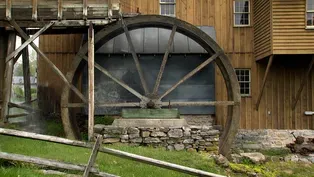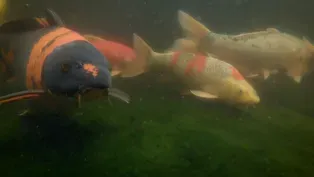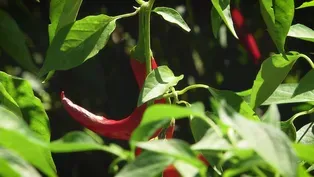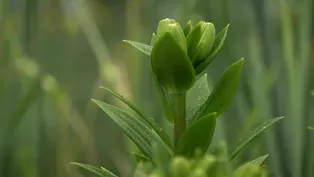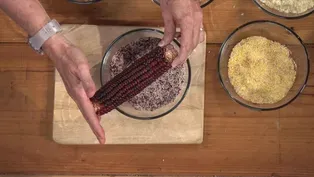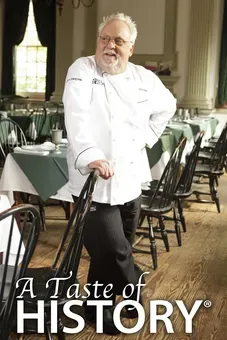Virginia Home Grown
Pond Building Tips
Clip: Season 23 Episode 3 | 4m 54sVideo has Closed Captions
How to build a water feature that meets the goals for your landscape
Get advice from a professional pond installer when planning a water feature for your landscape. Chris Bell of Bell’s Ponds & Patios explains what homeowners should consider before starting to build a pond and shares tips for maintaining the liner and ensuring proper filtration. Featured on VHG episode 2303; May 2023.
Problems with Closed Captions? Closed Captioning Feedback
Problems with Closed Captions? Closed Captioning Feedback
Virginia Home Grown is a local public television program presented by VPM
Virginia Home Grown
Pond Building Tips
Clip: Season 23 Episode 3 | 4m 54sVideo has Closed Captions
Get advice from a professional pond installer when planning a water feature for your landscape. Chris Bell of Bell’s Ponds & Patios explains what homeowners should consider before starting to build a pond and shares tips for maintaining the liner and ensuring proper filtration. Featured on VHG episode 2303; May 2023.
Problems with Closed Captions? Closed Captioning Feedback
How to Watch Virginia Home Grown
Virginia Home Grown is available to stream on pbs.org and the free PBS App, available on iPhone, Apple TV, Android TV, Android smartphones, Amazon Fire TV, Amazon Fire Tablet, Roku, Samsung Smart TV, and Vizio.
Providing Support for PBS.org
Learn Moreabout PBS online sponsorshipWell, Chris, I'm just amazed by what your career is, in creating water gardens.
I couldn't think of anything more fun.
You must be meeting a lot of people who think of water gardens as just beautiful additions to their landscape.
And yet I'm sure you've had some other experiences.
>>It's the best job in the world.
>>Yes, it is.
>>I get to do what I love, and it brings a lot of joy to their life.
So it's a double, it's a bonus, it's win-win.
>>Well I wanna share with, ask you then, most people ask for water garden.
Why do they want that water garden?
>>That's a good question, because actually, they don't really understand why they want it.
They think they want a big koi pond, they want all the fish.
Most times they don't really want all the maintenance.
And it's understandable, it's a lot of work.
It can be a lot of work.
So a lot of times I introduce them to either smaller fountains, or what we call pond-less waterfalls.
It's a great system.
You still get the waterfalls, you still get the lights, the sound, but you don't have the extra maintenance, and sometimes a lot less cost that goes along with the larger ponds.
>>Yes, well, many people want to do like a DIY water pond.
And yet, as a professional, what are some of the tips that they may not know to be able to really be successful with their DIY project?
>>There's always different levels of DIY, and I see some great installations, but typically some of the more common things, I actually brought a few things with me.
All ponds have liners.
Liners are gonna vary as far as quality, but most of 'em work very well.
The biggest thing I would say is they don't protect the liner.
So what I brought here is I have, I have liner underneath, but this is what we call pond underlayment.
It's to protect the liner.
So let's say you are doing a large pond, and you're gonna set a large boulder on top, you need to adjust it a little bit.
Odds are, it's gonna probably rip that liner on the bottom.
You're never gonna see that, so you're gonna have a leak.
It's also important for going on the bottom as well, because you have rocks, you have roots and things of that nature that could puncture the liner as well.
So just something to keep in mind, if you are at home doing your own pond, protect the liner.
It's very important.
>>So put it below, put the liner, and then put it above.
>>Yes, on the top and bottom.
And sometimes we'll actually take and we'll double it up, or even triple it up, again if it's a large boulder, lotta of weight, sharp corners, you wanna protect the liner.
The liner and your pump are probably the most, two largest expenses of the actual feature.
So you wanna protect your investment.
>>That's a good tip.
Speaking of liners, there's different widths, and there's different types.
What type do you recommend?
>>It depends on the installation, 'cause they're all made for different reasons.
If you're gonna have a regular koi pond, you can go with a normal, basic 45 EPMD rubberized liner.
We're actually concurrently working on a duck pond, and ducks are a bit more messy, and they're a bit more aggressive, so you want something a bit thicker, a bit more durable.
They're not the most fun to work with, but they're gonna last a lot longer.
>>Well, that would be good.
And then speaking of ducks, and dirty water, and things like that, how do you recommend the filtration system be?
What is your, I'll say perfect filtration system.
>>We prefer the Upflow filtration, which would be, we take something just like this.
We'd use several.
We base it on the surface area of the pond.
Then we measure out what the bog or the wetland's gonna be.
And we'll place these all throughout.
And what happens is the water's fed, it comes up from below.
We'll have layers of rocks, different layers of rocks, different size rocks.
>>Good size rocks, not just pebbles?
>>You don't want small pebbles, no, because it won't allow for water to flow through there properly.
>>Okay, so you want large gaps?
>>You want the large gaps.
And it will break down, as you go up, you'll have one to three inch rocks, and then a bit smaller.
And then on top, you'll actually have plants, and you can plant anything you want.
You can have tomatoes, you can have herbs.
It's a hydroponic system, basically.
>>Interesting, 'cause we all think about bog plants only, but you're saying we could put anything in this.
>>Yeah, bog plants are great, but they can get boring after a while.
And especially if you're a home chef and you want fresh herbs, it's perfect, it's natural, it's healthy.
>>Yeah, pH neutral.
>>Very, very much so.
>>So how do you clean out this system?
>>It's very easy, about every three months, you literally just open this guy up.
The water that's already being pushed in here is gonna push out any debris.
Just scoop it out, put it right back on.
>>It couldn't be easier.
>>Sometimes I'll turn it upside down so I don't see the top as much.
But usually I hide it, a rock, or a plant, or something like that, it's no big deal.
>>Just to make it a little discreet.
>>Yes, exactly.
Exactly.
>>Chris, this has been, this is amazing information, and it's so simple, these little tricks and tips that you've shared from your professional experience.
And I just, I really appreciate you coming here and kind of giving some insight into your world.
>>It's been fun, thank you very much for having me.
>>Thank you.
Video has Closed Captions
Discover uses for water in gardening and agriculture beyond sustaining plants! (26m 46s)
Video has Closed Captions
Discover how the power of water is used to process grain (8m 39s)
Video has Closed Captions
Learn how to harvest and store rainwater safely (3m 12s)
Video has Closed Captions
Learn about the products millers create from corn and wheat (6m 12s)
Providing Support for PBS.org
Learn Moreabout PBS online sponsorshipSupport for PBS provided by:
Virginia Home Grown is a local public television program presented by VPM

